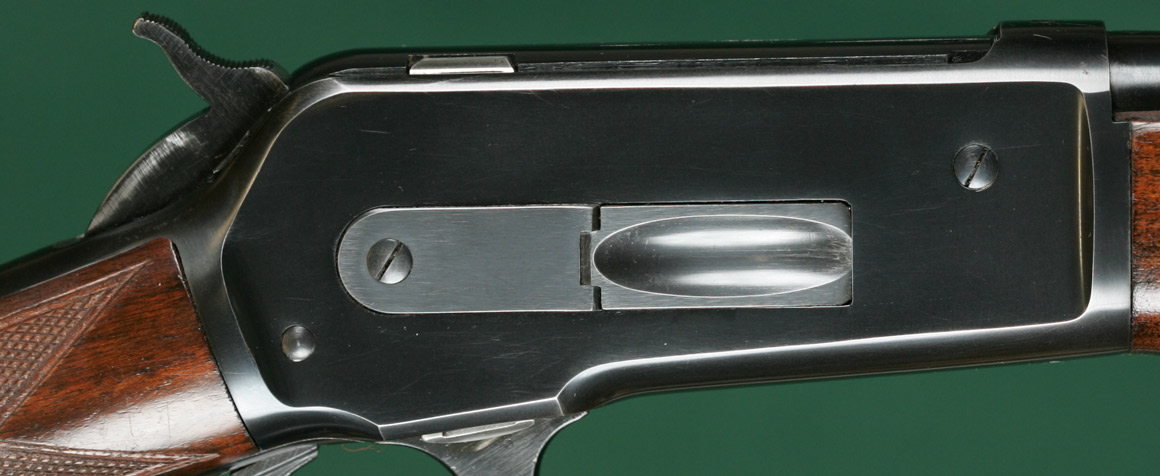When our exalted editorship was telling me Smith & Wesson asked what caliber they might consider as a follow-up to the very successful return of the Model 21 .44 Special we unveiled on the cover of Handgunner (Nov/Dec 2004), he said his vote was for the exact same gun but in .45 Colt. I said, “Bah, humbug!” Not exactly the best way to get a raise, but its my version of the truth. (Editor’s note: What Duke actually said, with a big sigh, was, “If you had any sense, you’d know what I’m talking about. How’d you ever get to be the editor, anyway?” Just so you know.)
Unless your purpose is to load with black powder or to fulfill a sense of nostalgia, no one with any sense would pick the .45 Colt over the .45 Auto-Rim/.45 ACP for a revolver cartridge. There are the guys who buy the big Rugers and stoke them up with super-stout loads. Hell, the reloading manuals even have special sections on loading the .45 Colt to high pressures especially for Rugers. That’s turning the .45 Colt into sort of a .45 Magnum, and not what I mean at all.
What I’m talking about is using the .45 Colt at the ballistics it is factory loaded, or at handloaded equivalents. In that arena, the .45 Auto-Rim/.45 ACP can do anything the .45 Colt can, and do it more efficiently and with better accuracy.
No, Honest
In its day the .45 Colt was a humdinger, pure and simple. It was designed for black powder, and those old factory loads with 35 to 40 grains were powerful by any standard. They had to be. In developing the .45 Colt cartridge, the U.S. Army intended it for the cavalry. Cavalry combat in those days meant horses, and they are both easier to hit and harder to knock down than people. So the Army’s cartridge developers wanted a handgun cartridge with power beyond what was needed for people.
They got it too. The .45 Colt, with black powder loads, was rated at about 900 fps with 250 grain bullets from the 7.5″ barrel of a Colt SAA. In the black powder era no other handgun cartridge was close, except the .44 WCF (.44-40). Others, such as .45 S&W (Schofield) .44 Russian, .44 Colt, .44 American and so forth all did good to break 750 fps, and with lighter bullets at that.
In my personal experience a case-full of black powder in the .45 Colt often exceeds 900 fps and sometimes breaks 1,000 fps, depending on the exact type and amount of powder used. So the .45 Colt’s case was made 1.285″ long to hold all that black powder. Incidentally that length is the same as for .357, .41 and .44 Magnums.
Blistering Loads?
Now fast forward to the smokeless powder era. To equal black powder ballistics and pressures in the .45 Colt requires tiny little charges of most smokeless propellants. Lyman’s newest RELOADING HANDBOOK #48 lists MAX loads with 250 grain bullets as being 9 grains of Unique, 7.4 grains of W231, or 6.2 grains of Titegroup. I swear, when one of those charges is dropped into a .45 Colt case I hear an echo! And what sort of velocities do they get with those MAX charges? The most is with the W231 load and it’s a “blistering” 894 fps from a 7.5″ barrel.
And those tiny little charges in great big cases can lead to all sorts of problems. The least of which is gas blow-by. That is caused when the cartridge case walls don’t obdurate to seal the chamber and gas leaks back along the case. It’s harmless, but is the reason behind your .45 Colt cases being burnt black along one side after firing.
Let’s even discount the very controversial accusation about light charges in big cases blowing up guns, since we can’t prove that it happens. The fact remains many cowboy action shooters have blown up their .45 Colt handguns. I’ve personally been at three matches where it has happened, and been sent photos of many more. And yes, I did one myself here at home.
Generally speaking the topstrap and top three chambers go into orbit. Amazingly no one has been hurt when this happened at matches I was attending. Discounting a light charge phenomenon, leaves double-charging as a culprit, and it’s a fact you really have to be looking to spot a double charge in a .45 Colt case.
Thirdly, those small powder charges tumbling about in the huge .45 Colt case can lead to ballistic inefficiency. Powder down in the front of the case on firing leads to one velocity; powder back in the rear of the case leads to another velocity. If the bullets are lightly crimped — or not crimped at all — the situation can be worse, to the point of hangfires and misfires. I’ve seen it happen. As a matter of fact, Hodgdon developed their relatively new Titegroup powder to not be position sensitive in the case; specifically to help with this problem. It works, too.
Me Worry?
But why have a problem? The U.S. Army figured this out too. When smokeless propellants were safely ensconced in society, what did they do with the .45 Colt? They threw it in the “obsolete” heap. Then they designed a new .45 caliber cartridge that was only .898″ long and called it the .45 ACP. They had to drop bullet weight about 20 grains but did they have to reduce velocity from .45 Colt loads? No way; they had already done that.
For their short-lived Model 1909 (Colt New Service) .45 revolver they had reduced their smokeless .45 Colt service loads down to 725 fps with 250 grain bullets. I’ve got an original unopened box of .45 Colt Model 1909 loads that shows it. Why did they make their smokeless .45 Colt service loads so puny? My guess is they probably didn’t want to take a chance on blowing up all those black powder era .45 Colt Single Action Army revolvers they still had floating around in inventory.
Then, with typical government farsightedness, in 1917 the United States entered a full-fledged war without enough guns to fight it. A solution to their lack of pistols was to get both S&W and Colt to chamber their big frame revolvers for .45 ACP. Extraction of the rimless case was provided by a little spring steel “halfmoon” clip. It was a good idea and still is.
About 1921 the Peters Cartridge Company saw a gap in the market and filled it. They simply put a rim on the .45 ACP case and called it the .45 Auto-Rim. It’s now deader than the manual typewriter, and that’s a shame. It’s a fine cartridge and makes much better sense than a .45 Colt, except for Old West nostalgia and black powder shooting.
Makes Sense
Go ahead and let the rampage begin, but I’m making sense here. And let me tell you this — I’m no newcomer to the .45 Colt. My records show I’ve owned 48 handguns so chambered, and still have 11 right now. Since 1968 when I bought my first Colt SAA, my handgun assortment has never been without one. “So wiseass,” you ask, “if you say they suck, why do you have so many?” Old West nostalgia — except for a Navy Arms Schofield, they’re all Colt Peacemakers. I already said that was a valid reason.
But, let me tell you this. Except for shooting done for articles and BP loads, I haven’t fired a round of .45 Colt for years. Many hundreds of the shorter .45 S&W (Schofield) shells have passed through those guns, but almost nary a .45 Colt. In fact I’ve only got a couple hundred rounds of .45 Colt brass lying around this place.
Now let me tell you something else. Before 2004, I had never fired a single round of .45 Auto-Rim and therefore had never handloaded for the cartridge either. In 2004 I added a half-dozen S&W and Colt revolvers chambered for it to my collection. Taking into account my ignorance of the cartridge, I proceeded to load over 1,000 rounds, and then fire them through those .45s; mostly testing for accuracy and chronographing. It’s a huckleberry!
The Plot Thickens
My project showed .45AR handguns can be finely accurate. That shouldn’t be a surprise, because both Colt and S&W have produced many thousands of targetgrade .45AR revolvers. Target-grade .45 Colt sixguns? What’s that? My project also showed equaling .45 Colt ballistics was no problem. With bullets weighing from 225 to 250 grains, my .45AR revolvers with barrel lengths of 5.5″ to 6.5″ were on a par with .45 Colt ballistics. Using powder charges taken directly from reloading manuals, and not MAX ones by any means, the .45AR’s velocities were running in the 850 to 900 fps range.
Here are some examples: 4.7 grains of Red Dot with the Redding/Saeco 225 grain full wadcutter cast bullet (#453) gave 891 fps from the Colt’s 5.5″ barrel. Extreme spread in those 10 round’s velocity readings was only 28 fps. Using the Oregon Trail 250 grain RN/FP and 5.6 grains of Unique gave 868 fps from the same gun with 29 fps extreme spread. The point is that powder charges in the .45AR case aren’t floating around, so they burn consistently. And here’s a good point: converting a set of .45 ACP dies to reload .45AR consists of just adding the proper shell holder.
Sharp witted readers must be thinking for the smaller .45AR to equal the larger .45 Colt then it has to be working at higher pressures. Sure, and so what? Speer’s RELOADING MANUAL #13 lists .45 Colt pressures at 14,000 psi and .45AR at 15,000 psi. But the .45 ACP is listed at 21,000 psi, and all revolvers made for .45AR/.45 ACP are safe for use with any of the .45 ACP loads.
Accurate?
The .45 Colt has never had much of a reputation for accuracy, but to be honest that has been more a problem with the gun’s dimensions rather than anything inherent to the cartridge itself. For decades gunmakers put .456″ or bigger chamber mouths in .45 Colt cylinders, but barrels of only .451″. Smith & Wesson saw the light some years back and reduced chamber mouths. Ruger did too, but sometimes corrected the problem too much. Colt has, as usual, proceeded down their own lonely trail.
In all my test firing of .45 Colt handguns over almost 40 years, I feel it’s a rare one that will group five shots under 2″ at 25 yards. With my assortment of .45ARs, often the first five shots cut a ragged hole, and many times five more dumped on top of them still left groups under 2″. Like I said, there have been many .45AR target-grade revolvers.
Duke Says
So here’s my say on the matter. When Smith & Wesson follows up the Thunder Ranch .44 Special Revolver with another, then just leave everything alone and make it for .45AR/.45 ACP. Then I bet we can prevail on Jeff Hoffman at Black Hills Ammunition to make us a .45AR factory load with about a 225/230 grain SWC bullet at 800/850 fps. Think of the versatility! Such a handgun could be loaded with .45AR cases and quick reloads done with speed loaders, or if someone wanted to use .45 ACP in half moon clips, that’s a perfectly good alternative.
If you want to love the .45 Colt for its wonderfully colorful history, then by all means do. If you think it’s great to stoke it full of black powder and cause everyone else on the firing line to jump and say, “What the hell was that!” Then go for it — I do it, and it’s great fun. But if you think the .45 Colt is some great shakes as an all-around smokeless powder revolver cartridge — you’re wrong. The .45AR is better. It may be dead but it shouldn’t be. Let the letters begin!
—————————————————————————– This is just your classic click bait / create letters to the editor piece. While he does make a good arguement. But if I had to face down some nasty bit of shit. I would not be terribly worried about it if I had a S&W model 25 in my paw. Grumpy
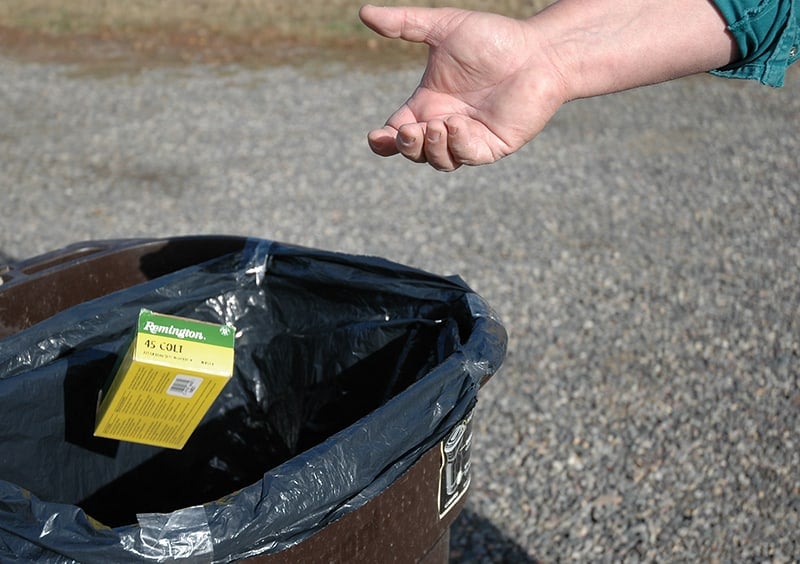

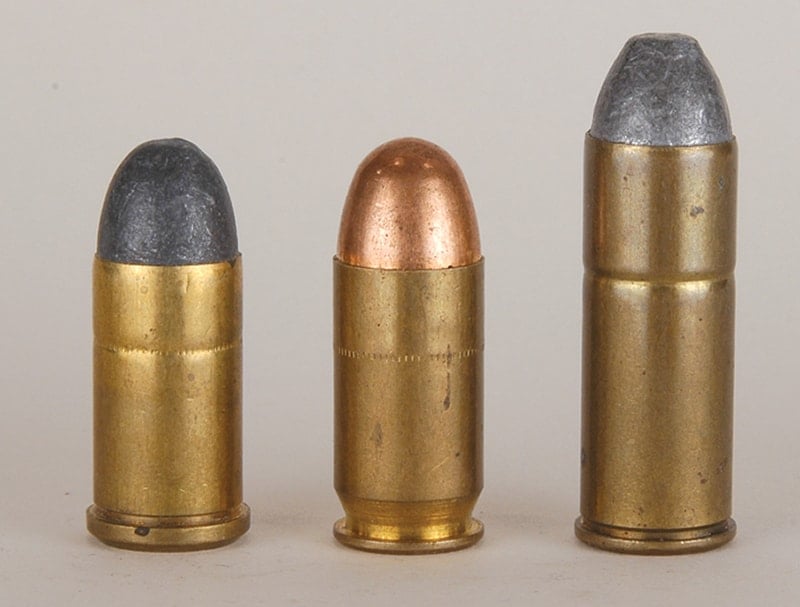
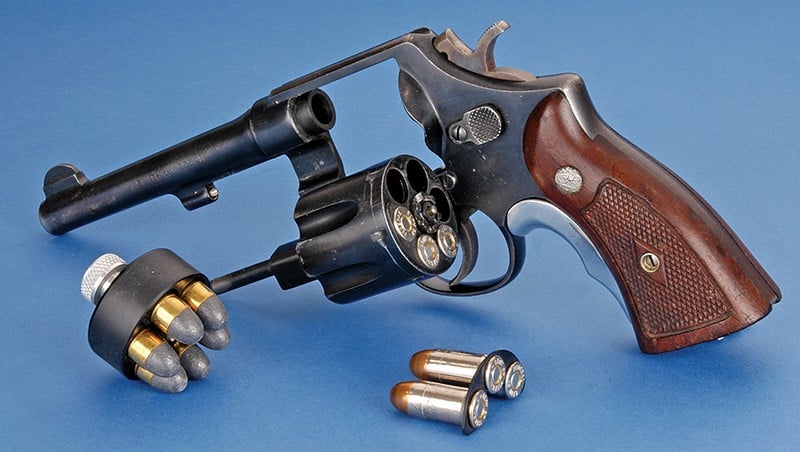
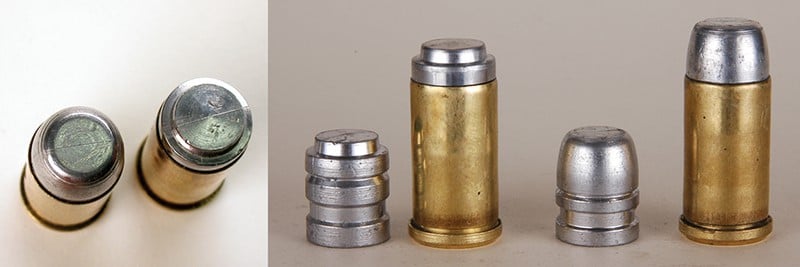

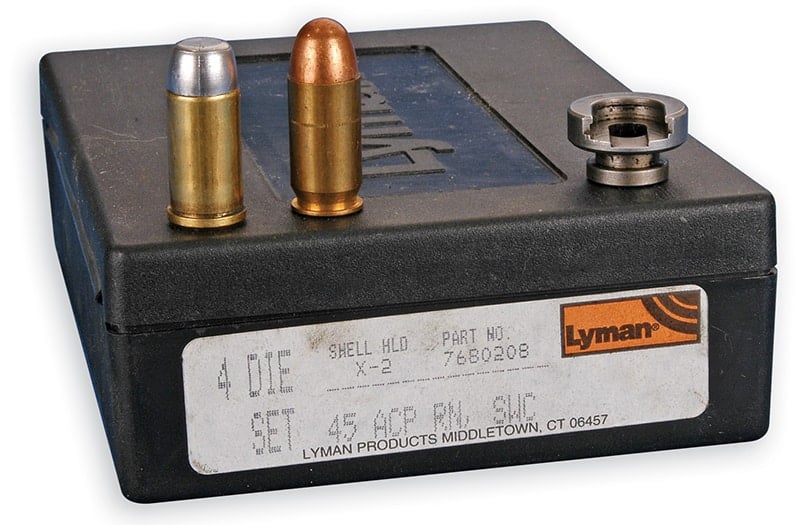

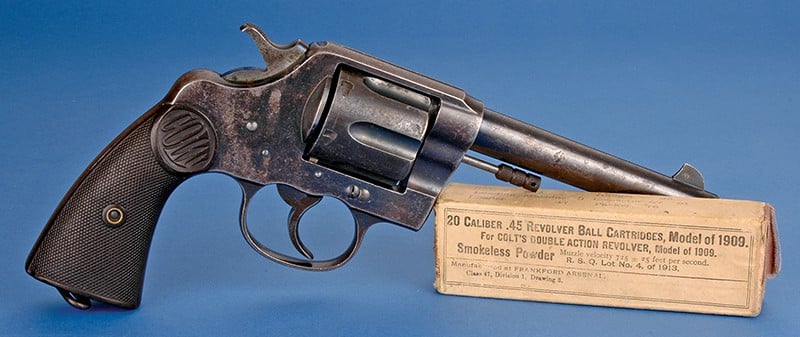
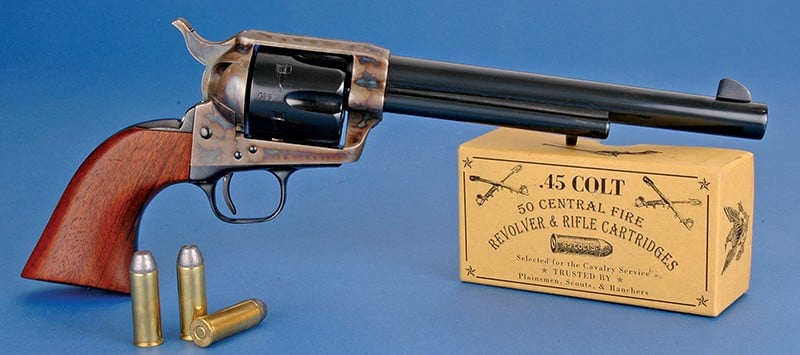
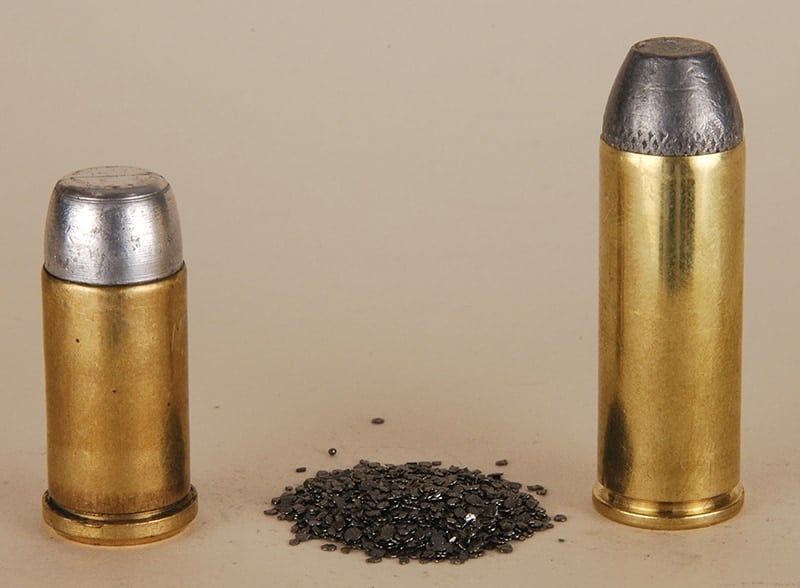
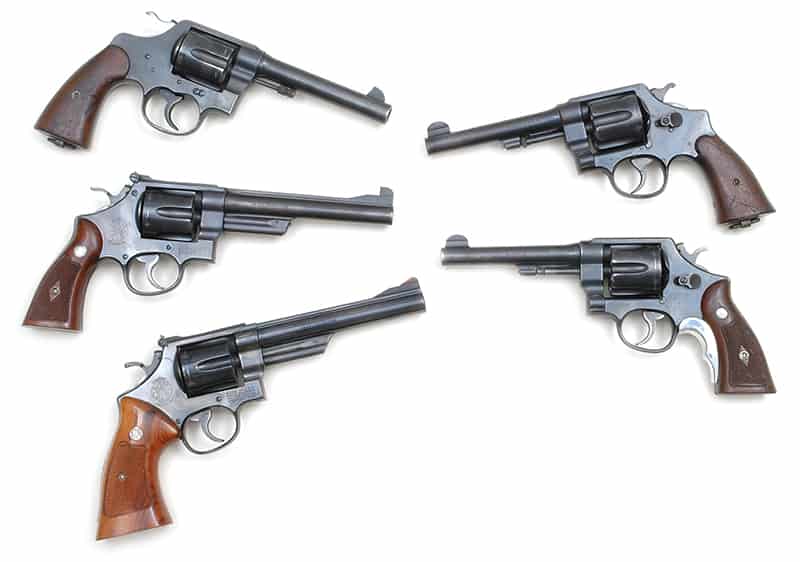

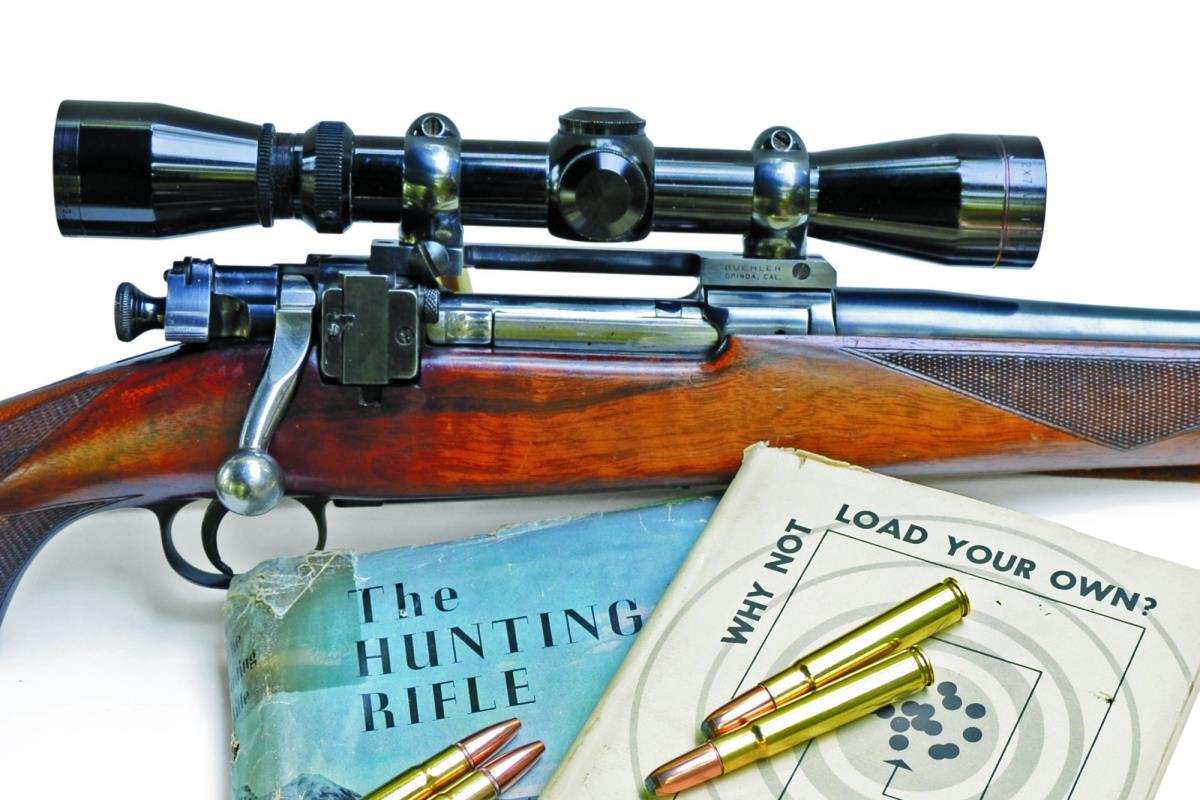
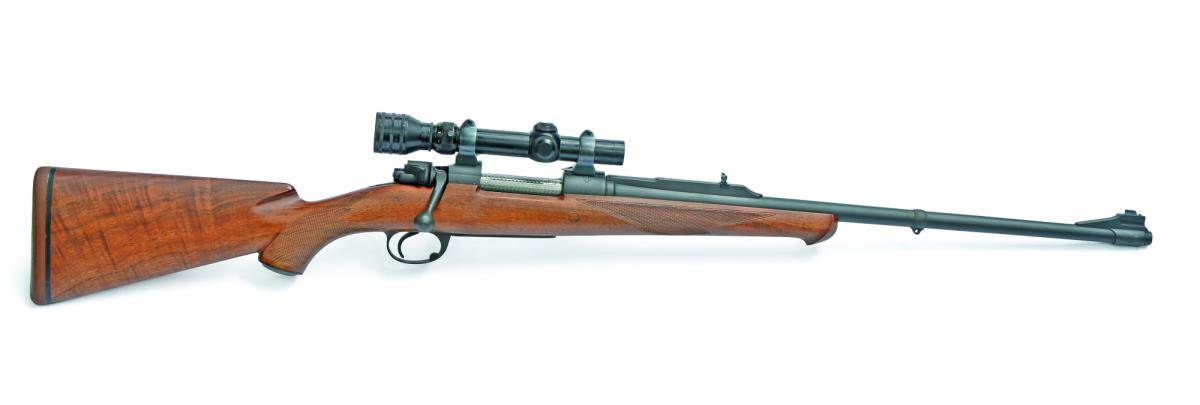
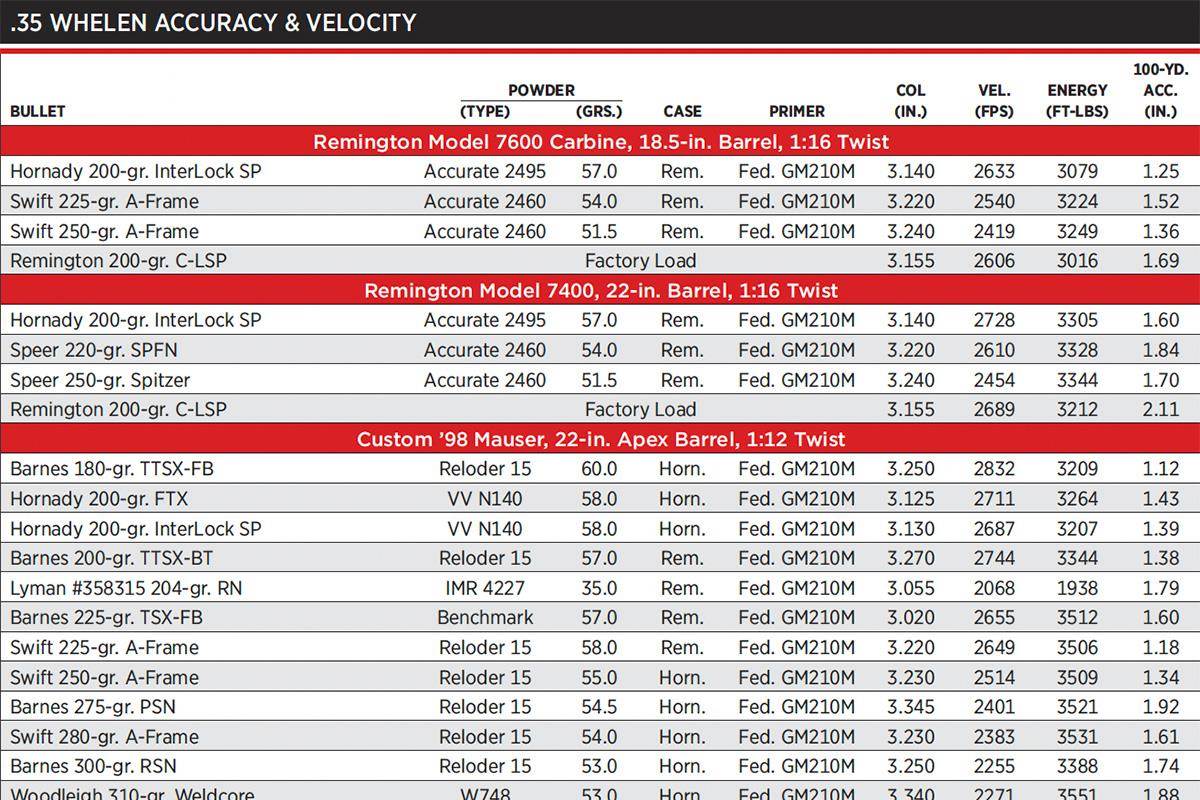
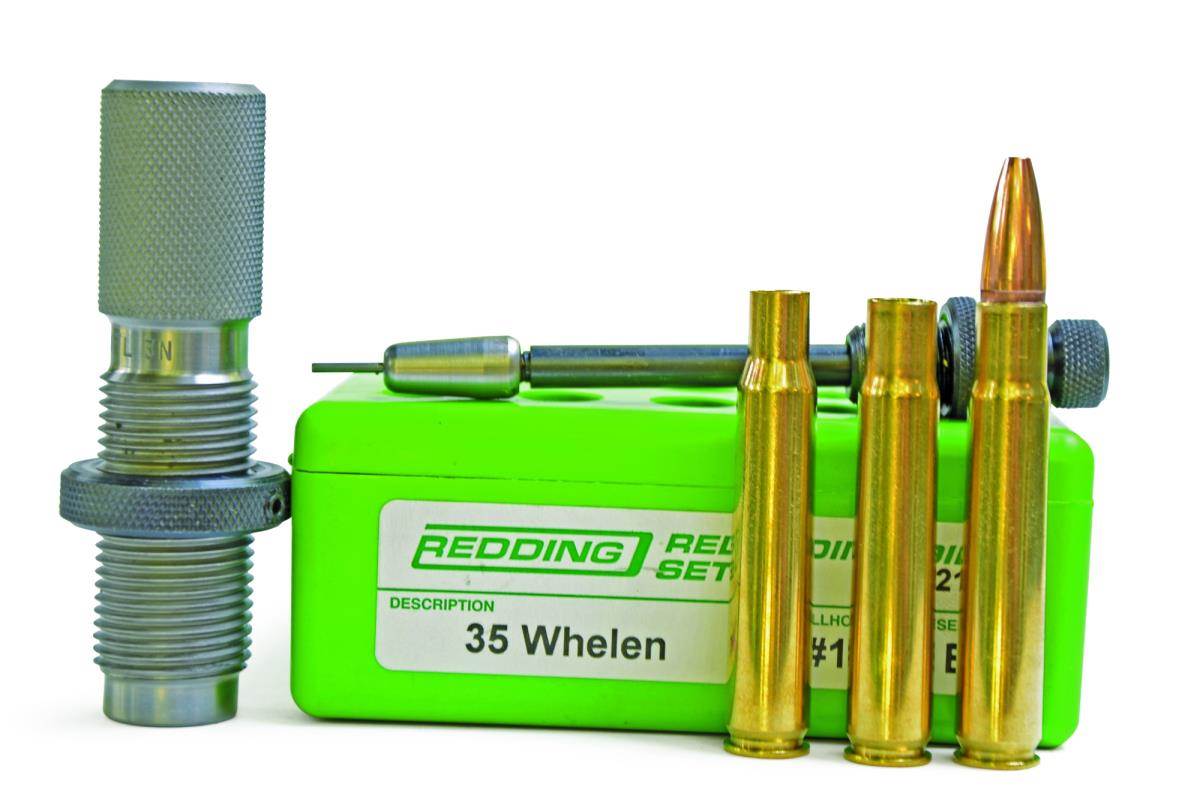
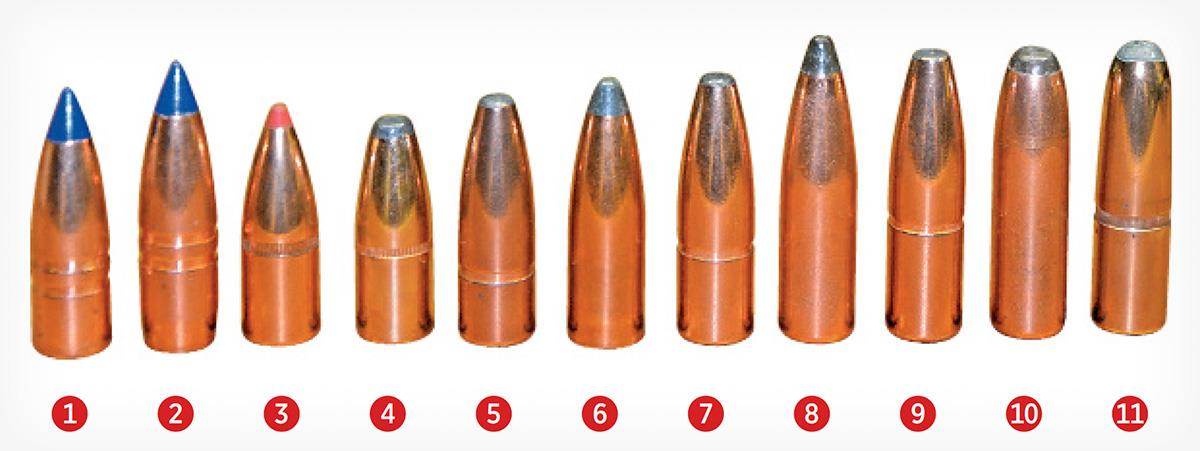
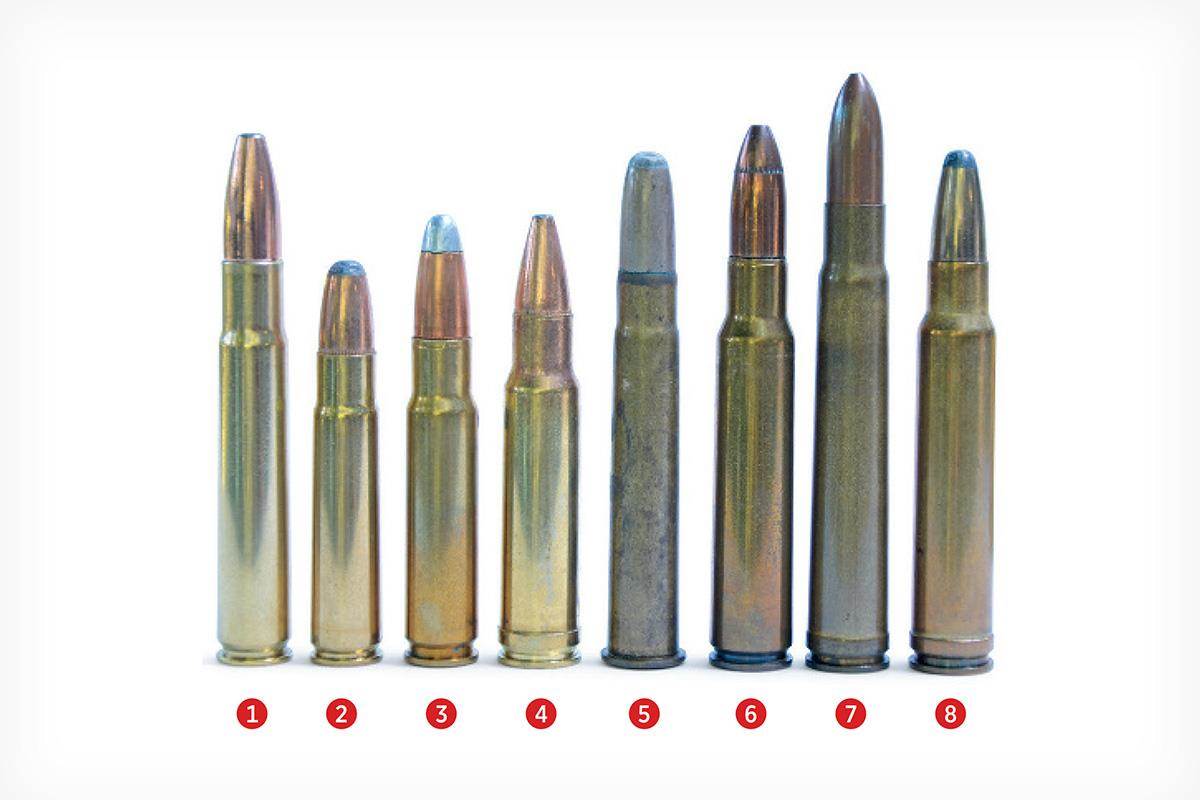



 For most shooters, less recoil means better accuracy. Natalie Krebs
For most shooters, less recoil means better accuracy. Natalie Krebs Two nice groups produced by a .308 rifle shooting Federal Gold Medal with 168 grain, Sierra Match Kings. Natalie Krebs
Two nice groups produced by a .308 rifle shooting Federal Gold Medal with 168 grain, Sierra Match Kings. Natalie Krebs While .308 has always been more plentiful and cheaper, the 6.5 CM is dropping in price and gaining in popularity. Dave Hurteau
While .308 has always been more plentiful and cheaper, the 6.5 CM is dropping in price and gaining in popularity. Dave Hurteau This bull elk was shot with a 143 gr. Hornady ELD-X Precision Hunter 6.5 Creedmoor. It ran about 50 yards and dropped. Aram von Benedikt
This bull elk was shot with a 143 gr. Hornady ELD-X Precision Hunter 6.5 Creedmoor. It ran about 50 yards and dropped. Aram von Benedikt Both cartridges are great choices for hand loaders. Hornady
Both cartridges are great choices for hand loaders. Hornady With its high ballistic coefficient, the 6.5 Creedmoor is hard to beat at long range. Natalie Krebs
With its high ballistic coefficient, the 6.5 Creedmoor is hard to beat at long range. Natalie Krebs Any hunting rifle chambered for 6.5 Creedmoor or .308 Winchester should perform well at mid-range. Natalie Krebs
Any hunting rifle chambered for 6.5 Creedmoor or .308 Winchester should perform well at mid-range. Natalie Krebs Topping off a magazine with 6.5 Creedmoor Federal Premium ammunition. Federal Ammunition
Topping off a magazine with 6.5 Creedmoor Federal Premium ammunition. Federal Ammunition